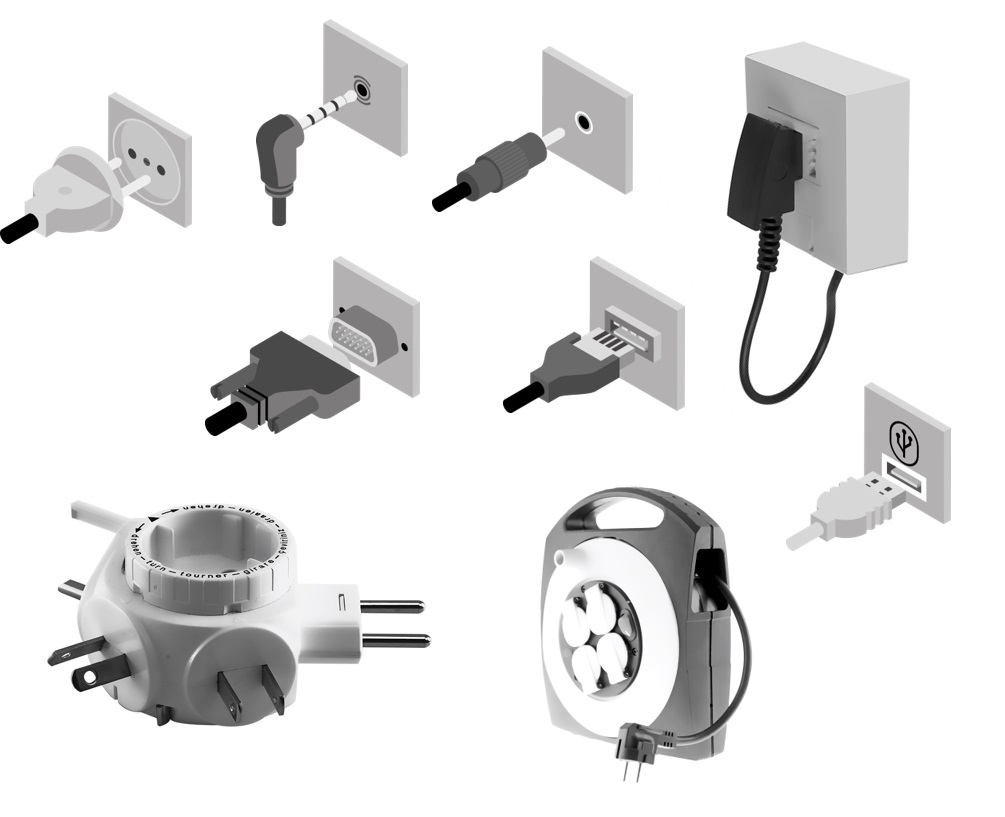Passive Devices
Cables, antennas, adapters, jacks, etc. within the scope of the German Electrical and Electronic Equipment Act (WEEE)
Cables, antennas, adapters, jacks and the like will fall within the scope of the Electrical and Electronic Equipment Act since mid-2019. This means that the requirements of the Electrical and Electronic Equipment Act also apply to these so-called passive devices – from registration to disposal.
Affected products
Passive devices are devices that merely conduct electrical currents without providing separate functions for the user. The change applies to passive terminals designed for operation with an AC voltage of up to 1,000 volts or a DC voltage of up to 1,500 volts.
Selected examples of passive devices that fall within the scope of the Electrical and Electronic Equipment Act according to the changes in 2019:
- Antenna: Outdoor antenna, roof antenna, dipole antenna, rod antenna, telescopic antenna, cable antenna, indoor antenna
- Adapter, jack, plug: Adapter (e.g. display port to HDMI, DVI-HDMI, USB to Micro-USB), jack adapter (e.g. 6.35 mm to 3.5 mm), low voltage coupler, travel plug, telephone switch, telephone adapter, intermediate plug
- Socket, socket for fixed mounting or attachment (e.g. wall, floor, machinery) or hat rail: Antenna socket outlet, antenna connection socket outlet, power socket outlet, heavy-duty power socket outlet, telephone socket outlet, telephone jack
- Ready-to-install cables: Audio cable, display port cable, HDMI cable, cable drum, USB cable, USB extension, extension cable
- Switch, push button for fixed mounting or attachment (e.g. wall, floor, machinery) or hat rail: Light switch, emergency stop switch/button
- Fuse protection: Fine-wire fuse, NH fuse, melting fuse
What effects did this regulation have and what do producers, importers and distributors have to do in order to act in a legally compliant manner
Producers, importers and dealers of such passive devices have to check (since 2019) whether they are placing them on the market for the first time and thus have to comply with all obligations and requirements of the Electrical and Electronic Equipment Act. These include the following, for example:
- Registration of the devices with the EAR Foundation before they are offered or sold.
- Provision of an insolvencyproof guarantee
- Regular quantity reports
- Takeback and disposal
Another important point is the obligation to label the product. Thus, for example, the brand for producer identification must now also be affixed to passive terminal devices.
Note
In the course of registration, the passive devices must be assigned to the device types of the EAR Foundation. The following categories are relevant
| small appliances | large appliances | ITC (IT and Communication) |
| rolled up < 50 cm | rolled up > 50 cm | e.g. cables that transport data |
Why was the previous regulation changed?
With the regulation update 2019, the responsible authority aims to harmonise the classification of passive devices as far as possible at European level. This is because in many European countries, these are already covered by the WEEE Directive.
However, there are differences in the exact implementation in the individual countries, which must be taken into account when registering passive devices. In Belgium and France, for example, there is a separate category for passive devices. In other countries, such as Spain and Austria, they are included in the category “small electrical appliances”.
Incidentally: Passive devices in Switzerland are not subject to registration.
Do you sell passive devices and would like a partner to help you implement the Electrical and Electronic Equipment Act? If so, then discover take-e-way’s solutions now.
Would you like more information and advice? If so, please give us a call!
